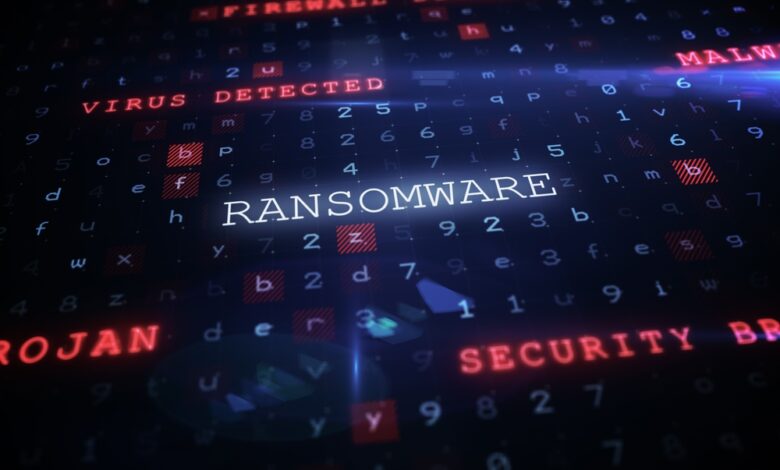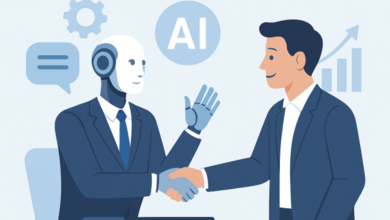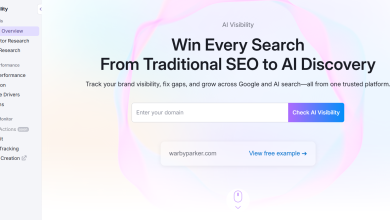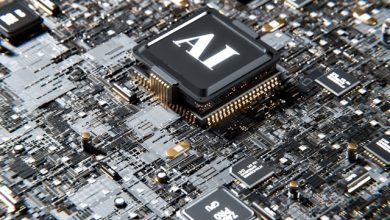
Cybersecurity has entered an arms race, and the battlefield has fundamentally changed. While businesses have spent years building traditional security defenses, cybercriminals have embraced artificial intelligence to create faster, smarter, and more devastating attacks than ever before.
The result?
Security teams are drowning in alerts while real threats slip through undetected.
The Problem: The Rise of Automated Threats & Alert Fatigue
The AI Threat
Today’s cybercriminals aren’t just hackers in hoodies, they’re technologists wielding AI as their weapon of choice. They’re deploying sophisticated, high-volume attacks that would have been impossible just a few years ago:
- Automated phishing campaigns generate thousands of personalized emails in minutes, each crafted to bypass traditional spam filters
- Fast-moving ransomware spreads through networks at machine speed, encrypting critical data before human defenders can react
- Polymorphic malware constantly rewrites itself to evade signature-based detection systems
These AI-powered attacks don’t just happen faster; they happen at scale. Where a traditional attack might target dozens of systems, AI-driven threats can simultaneously assault thousands, probing for weaknesses across entire network infrastructures in real-time.
The Cost of “Too Much”
This massive volume of threats has created an unintended consequence: alert fatigue. Modern security systems generate thousands of alerts daily, burying security teams under false positives. The impact is severe:
- Human burnout as analysts struggle to investigate every alert
- Delayed response times stretching from minutes to hours or days
- Increased risk as genuine threats exploit the chaos to slip past overwhelmed defenders
For business leaders, this translates to higher operational costs and the constant worry that their next breach is just one missed alert away. Many small businesses are finding themselves at a cybersecurity breaking point, struggling to keep pace with evolving threats using outdated security approaches.
The Solution: The AI Cure
Introducing AI-Driven SIEM
The answer isn’t more alerts or more analysts! It’s smarter security.
AI-driven Security Information and Event Management (SIEM) represents a fundamental shift in how we approach cybersecurity. This isn’t just another security tool; it’s a comprehensive service that combines cutting-edge artificial intelligence with expert human analysis to create a truly intelligent defense system.
Think of it as turning the tables on cybercriminals. If they’re using AI to attack, we need AI to defend. But more than that, we need AI specifically designed to solve the alert fatigue problem that’s crippling traditional security approaches.
How AI Fights AI
The magic happens in three critical areas:
Advanced Correlation forms the foundation of AI-driven SIEM. The platform continuously ingests and analyzes vast amounts of data from every corner of your IT environment; endpoints, cloud services, network traffic, user behavior, and application logs. But unlike traditional systems that simply collect this data, AI-driven SIEM uses machine learning algorithms to identify patterns of malicious behavior that would be invisible to human analysts or rule-based systems.
For example, while a traditional SIEM might flag unusual login activity, an AI-driven system recognizes that this login, combined with specific file access patterns and network communication behaviors, indicates a compromised account being used for data exfiltration. It connects dots across thousands of data points to paint a complete picture of threat activity.
Prioritization and Triage addresses alert fatigue head-on. Instead of generating more alerts, AI-driven SIEM dramatically reduces them by focusing only on what matters. The system assigns risk scores to potential threats based on multiple factors: the likelihood of the threat being genuine, the potential impact on business operations, and the urgency of response required.
This means security teams receive dozens of high-priority, actionable alerts instead of thousands of generic notifications. Each alert comes with context, analysis, and recommended actions, transforming overwhelming noise into clear, focused intelligence.
Automated Response handles the routine while humans focus on the complex. When the AI identifies common threats (like a device showing signs of malware infection or suspicious network traffic from a known bad actor) it can automatically initiate containment measures. This might involve isolating a compromised device from the network, blocking malicious IP addresses, or quarantining suspicious files.
These automated responses happen in seconds, not hours, stopping threats before they can spread or cause damage. Meanwhile, human analysts are freed up to handle the sophisticated, novel threats that require creative thinking and strategic response.
The Managed Advantage: Why You Don’t Have to Go It Alone
Beyond the Technology
Here’s where many businesses make a critical mistake: they assume that buying AI-driven SIEM technology is enough. The reality is that implementing and managing these sophisticated systems requires specialized expertise that most organizations simply don’t have in-house.
AI-driven SIEM isn’t a “set it and forget it” solution. The machine learning models need continuous training and tuning. Alert thresholds require regular adjustment. New threat patterns must be incorporated into detection algorithms. Most importantly, when the system identifies a genuine threat, you need experts who can interpret the findings and coordinate an effective response.
The Power of the SOC
This is where Managed Security Operations Centers (SOCs) become invaluable. A managed SOC provides access to a team of cybersecurity experts who live and breathe AI-driven security. These aren’t generalist IT professionals trying to handle security on the side, they’re specialists who understand how to leverage AI-driven SIEM platforms to their full potential.
These teams work around the clock, monitoring your environment for threats while you focus on running your business. When the AI identifies a potential threat, expert analysts immediately begin investigation and response procedures. They understand the nuances of different attack patterns, can distinguish between genuine threats and false positives, and know how to coordinate incident response across your entire infrastructure.
More importantly, managed SOC teams continuously improve your security posture. They analyze attack trends, adjust detection parameters, and implement new security measures based on emerging threats. It’s like having a dedicated cybersecurity research and development team working exclusively for your business.
The Result
The combination of AI-driven SIEM technology and managed SOC expertise creates something greater than the sum of its parts: a proactive defense system that’s both responsive and predictive. Instead of reacting to threats after damage is done, your security posture actively prevents attacks from succeeding.
This approach reduces operational overhead by eliminating the need to build and maintain internal cybersecurity expertise. It provides peace of mind through 24/7 monitoring and rapid response capabilities. Most importantly, it creates a security posture that evolves with the threat landscape, ensuring your defenses remain effective against both current and emerging threats.
Securing Your Future
The cybersecurity landscape has fundamentally changed, and traditional security approaches are no longer sufficient, especially with ransomware damage expected to reach $250 billion globally by 2031. As cybercriminals embrace AI to create faster, smarter, and more devastating attacks, businesses must respond with equally sophisticated defenses.
AI-driven SIEM represents more than just technological advancement. It’s the evolution of cybersecurity itself. By combining artificial intelligence with human expertise through managed services, businesses can finally break free from alert fatigue while building defenses capable of stopping tomorrow’s threats today.
The question isn’t whether you’ll eventually need AI-driven security; it’s whether you’ll implement it before the next major attack or after. In a world where cybercriminals operate at machine speed, reactive security is no longer an option.
Consider a managed SIEM solution as your next strategic investment in business continuity. Your future self will thank you for taking action today, and your sleep quality will improve knowing that intelligent systems and expert analysts are standing guard while you focus on what you do best: growing your business.





